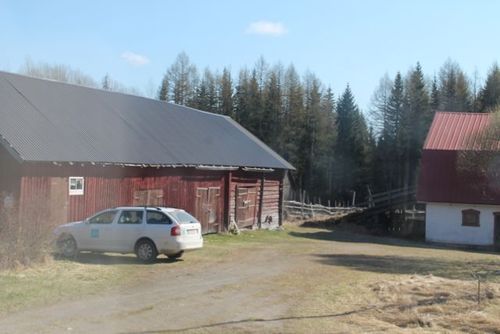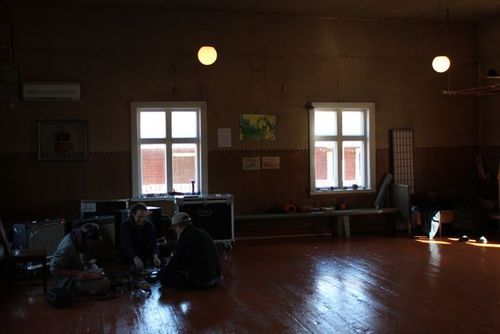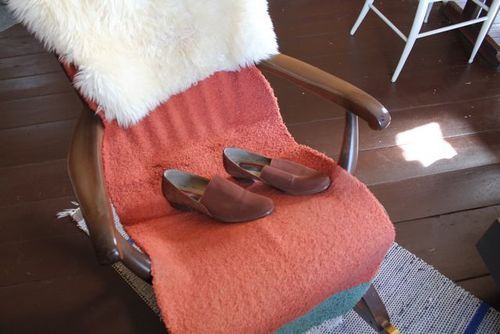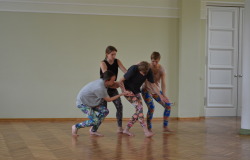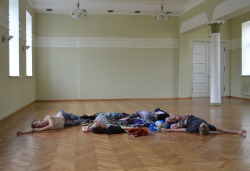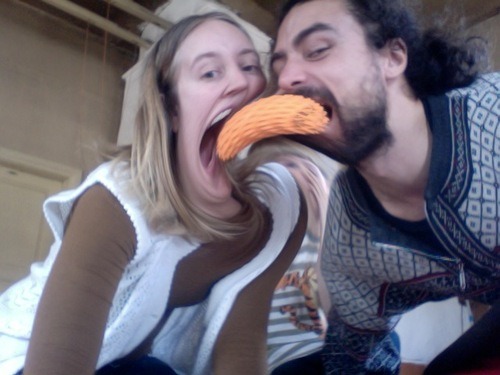

Evaluation of keðja 2012 - 2015 now on-line
“A visionary, connective and synergetic project”.
This is how our evaluators Mary Ann DeVlieg and Judith Staines, both experienced evaluators with knowledge about EU funded cultural collaboration projects, describes the 2012 - 2015 keðja dance activities. The Wilderness residencies were part of the project.
The report Fertile Ground is now on-line. If you´re interested in finding out about the extent of a rather large project like this, - what it entails, how we did it, what we learned and what might happen in the future, the report is where you find it.
http://www.kedja.net/?page_id=1354
The Mob, Kokko day 15
Hey!
We are preparing the house and tupa studio for tomorrows sharing!
In the meanwhile: Jukka took som pictures of us while dancing around.




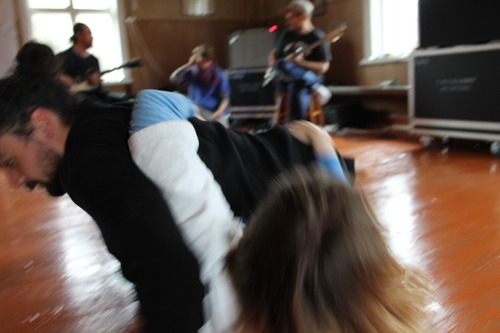
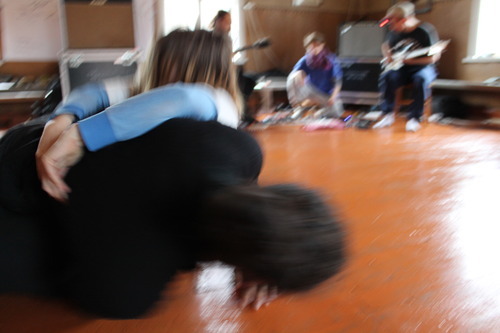

Inta Balodes Voyage into the Wilderness. PART I. How I imagine Wilderness.
Inta Balode writes about her expectations towards a Wilderness residency.
“The artists arrive to the location and it is an event, maybe not as intensively full of expectations as in old times when circus arrived in the town, but the presence of the artists is felt and known, and triggers curiosity. For some time the artists live there, but don’t bring their work out of “the tent”, and the curiosity of the local community keeps growing. The local people see and feel that the artists look around with great attention, they appear in the different places where the locals gather; they bring some things back to their “tent”. The local people get curious about their own lives, about the things the artists look at. They start liking their own lives. They start analyzing their own lives. Sometimes they laugh at the artists when they try so hard to do things which seem so usual to the local people.
Some people start to know the artists better and the talk is that some even have been into “the tent” .
The local people start thinking that those artists are different. Usually when artists come to visit the community, they stay for some hours, sing 8 songs or show 7 paintings, or show an hour long theatre play. They get flowers, they look inaccessible and they leave.
Maybe the ones that are staying here now, for so long are not artists at all? What they do in their “tent”?
But as there are more visitors coming to join the artists, as there are articles in the big press, as there are some well-known journalists coming to the village – they must be real artists. It is hard to check because they are foreigners and talk another language. Learning languages is so important!
One day the artists open up the tent and invite the local people to come and dance with them. It turns out that things can be understood also without language. It is not really dance the locals are invited to, but it is interesting and healthy and now the locals, think about it even more. They reflect that if those artists are real and famous artists and they came to our small unnoticed village then we are somehow important and needed. We are still on the map. And maybe they will tell others about our lives and we will be heard. That is in the case we decide to speak up, in case we decide we are valid and have a voice!
After some weeks the artists invite the local people to come to the performance. Even if the artists have been around for a long time the locals don’t know what they will be showing. It is unusual what they see, it is something new, they still wouldn’t call it dance but if in the artists countries is called dance they don’t mind. But then at some point the locals realize that the lives, their village, the forests and fields, the cows, the river and the sea they are looking at every day, somehow managed to go into the performance. The artists don’t wear cow masks and don’t play with blue fabric to show the sea but it is all there. The locals are grateful to the artists for being seen, proud of their place and a little proud of themselves. Taken by the unusual, disturbed from the regular understanding of what dance and art is and even sometimes they now forget to switch on the TV by the end of the day.”
Read the other parts of Inta Balodes Voyage into the Wilderness.
PART II. The Wilderness believes
PART III. Portrait of a Wilderness host
PART IV a. What people say about Bebrene/Dviete Wilderness dance.
PART IV b. What did I see and feel in Ainaži?
PART V. Conclusions based on my Bebrene and Ainaži experiences
Inta Balode is a writer and editor of the Latvian on-line dance journal www.journal.dance.lv Inta and Dance LV Journal are keðja Writing Movement collaborators.

Inta Balodes Voyage into the Wilderness. PART V. Conclusions based on my Bebrene and Ainaži experiences
- The ancient hospitality – foreigners are still very special guests, so it is important to accept them in the best possible way, to show them around, to help out, and to feed them well. Satisfaction is if they are satisfied.
- Acceptance via the human qualities of the guests – it gets stressed several times that the artists worked with great responsibility, that they were simple and nice people, that they joined local events and got into the atmosphere easily. And the ancient fear of foreigners who might be different and might even be not so nice, and might behave in an unacceptable way, calms down and they become “like us”.
- Language – people living in the countryside and small towns in Latvia still don’t know English or other foreign languages very well. Or are shy to use their knowledge. At the same time they miss the communication with the guests who are right next to them. Elderly people are less shy and talk without words or just in slow and clear Latvian, and through trying to convey the message the amount of love they show is bigger than linguistically ever possible.
- Sponge effect vs active participation – it got clear that artists really fully used their time to work. They didn’t come to rest, they came to work and had good conditions for this. At the same time the local people might feel and they are also right – that the artists came because of their village, nature, culture and history and they want to show it, want them to see it. So there was still some dissatisfaction about there not being enough communication with the local community. But what is there to do when there is a language barrier? And what would be the right amount and way of communication. And how should the artist prioritise if they are asked to be involved in the life of the community and to produce their work at the same time? If they went dancing in the “very contemporary manner” in the public space all the time wouldn’t it do worse for the perception of dance?
- The sentence “it was omething to think about” –was after the showing one of the most popular summarising conclusions from the audience members. Always meant in a very positive way. It definitely says something about the regular offer of arts “products” in the regions. Wilderness is as a chance to see other, less usual aspects of a culture; a possibility to switch off the everyday thoughts; to try a different tempo and a different physical and mental angle to watch from.
- Busy, tired, not interested. Three problems, three obstacles making people not go, not see, not care about, not like things. Life is hard, many things needs to be done, busy busy with the next things.
- Everything depends on a few people – a few amazing people. Some people are always available, never tired, always interested. And thank God the world still depends on them.
Read the other parts of Inta Balodes Voyage into the Wilderness.
PART I. How I Imagine keðja Wilderness.
PART II. The Wilderness believes
PART III. Portrait of a Wilderness host
PART IV a. What people say about Bebrene/Dviete Wilderness dance
PART IV b. What did I see and feel in Ainaži?
Inta Balode is a writer and editor of the Latvian on-line dance journal www.journal.dance.lv Inta and Dance LV Journal are keðja Writing Movement collaborators.
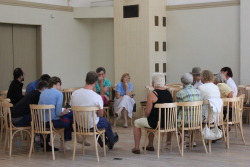
Inta Balodes Voyage into the Wilderness. PART IV b.
What did I see and feel in Ainaži?
“Finnish artist, London based Janina Rajakangas together with Neil Callaghan, Said Dakash, Disa Krosness and Janne Aspvik are staying in Ainaži, in Northern Latvia, next to the Estonian border. Once a busy port and birth place of Latvian seafarers, Ainaži is now a small peaceful coastal town, also known for its protected area of sea meadows. The artists will live and work in Ainaži for three weeks..” This time I will go and check out.
I have been to Ainaži many times, more precisely I have passed by on the highway and stopped at the gas station and at Hesburger many times, but I think I have only once done any sightseeing there. I know the Ainaži Wilderness hosts. Solveiga Muciņa is the director of the culture house and also the leader of the local folk dance group. Roberts Muciņš is her son; he started in folk dancing, did serious ballroom dancing and is still teaching it, but he also has a degree in contemporary dance. Mainly because of this, there has already been several contemporary dance performances in Ainaži. Solveiga and Roberts are planning to continue to work on developing Ainaži as a residency place for contemporary dance artists. Ainaži is a very small town and even if it is close to the busy highway going to Tallinn, once you step off the main road, things change.
Ainaži method and story
I will try to see things with local eyes rather than with the eyes of an outsider. I will try to get in to the Wilderness feeling. I will try to find out what the difference is between a regular dance event and a Wilderness dance event?
I visited Ainaži three times. The first time I just took off and went there. I looked around, looked into the culture house where I knew that the residency took place, it was open and empty. Then I called Solveiga, she was having lunch in Hesburger, so I went there and talked to her. It turned out that the artists had a day off. Presumeably their only day off during the residency. So I respected it.
For the second time I went for something more precise. Roberts had told me that the artists would have a very informal showing for Janina’s parents who would be coming from Finland. He said that I could also come. I don’t know if he warned the artists that there would be somebody coming from the outside, somebody who writes about dance. I think he didn’t. Anyway, I went there and the artists let me in, allowed to watch the rehearsal. I had arrived early on purpose hoping this would happen and this time I by the way, went by motorbike, thinking that it would make me a little bit wilder. I never imagined that Jurgita would come on a much smaller motorbike all the way from Bebrene! So she deprived me for a large part of my wilderness self image. I saw the rehearsal and stayed for the showing, and got involved in a post-showing discussion with the artists, and Roberts served me and the artists some incredibly tasty local fish, smoked two hours! I also visited Solveiga and Roberts in their home, we chatted about dance and they fed me tasty blood sausages with lingonberry jam.
So, of course, having experienced all that, I went there for the third time (not only because of the food but also because of the nice hours I spent with the artists and Roberts). It was the day of the showing. Unfortunately on that day nobody was smoking fish but still I don’t regret that I wwnt there again. The artists remembered me, they said hello and smiled, and everybody looked slightly stressed before the show. The local people kept coming and coming – young ones, old ones, men and women, children, latecomers crossing the space, latecomers finding the side door, people who really don’t know how to make their mobile phones silent and the pensioners’ union who made a nice cake for the artists. Really tasty, I had two pieces! Everybody stayed for the full showing, people were really watching. There was some text in English but Roberts was translating, so everything was clear for everybody. After the performance some ladies told the artists what they saw in the performance. I also told again how it was for me. As my Honda was parked next to Jurgita’s Vespa we went out together and had a girl’s talk about motorbikes. I said I couldn’t imagine her riding here all the way! It could only happen in the Wilderness.
Ainaži Wilderness essential things
I was asking myself again - what is the difference between a regular dance event and a Wilderness dance event?
From the audience point of view - I would say a clean slate (or a “before contemporary”) perception because the local audience members have not been taught how to talk about contemporary dance, how to react to what they see, how to recognize certain things. So there are moments which actually are part of the performance but to the audience looks as “performance hasn’t started yet”, there are applauses in between scenes which would not happen in a city venue, and in the local press this kind of arts event is labelled “for youth”. Even if it is obvious that the artists are not that young the local journalists probably couldn’t believe that this could be something adults would be doing.
From the artists’ point of view, I would say that a residency stay provides a peaceful surprise and an unusual distance to everyday city life, -the possibility to emerge oneself into the here and now. An opportunity to lead a “normal life”, i.e., work for eight hours and then go home and cook, and spend time with friends and family - instead of the hectic lives of most artists – teaching, performing, choreographing, occasionally making some money, working odd jobs etc. Also when staying in the residency location, letting the local space, time and people flow into the system, the whole process changes and even the perception of ones own art is altered when partially perceived in the context of the local situation.
The first visit – bits of info about the artists
- The artists are working with lot of responsibility; they almost don’t get out of the studio.<
- The artists´ meeting with the local pensioners’ union took place. They interviewed the pensioners about the themes they were working on – LOVE, WORK, HOME, CHILDREN.<
- The other day Solveiga and Roberts were teaching the artists some Latvian folk dance steps.<
Talking to the hosts, watching rehearsals, the informal showing and talking to the artists
Solveiga tells how much she liked this year’s Song and Dance festival, particularly “the old good choreographies”. She will do everything to find a way to go again to the next one which is in five years. If not leading the dance group then at least singing in the choir.
Solveiga says that contemporary dance is more about real life than folk or any other dance, it is perceived very individually – some adore the performance, some will not be able to even watch it. And it is not because of professional experience or education, or being ready to see it. It is about life.
Robert, will you use me as a dancer in your diploma work?! But Mom, this will be a contemporary dance work. Yes, yes, I know!
The artists say they came with the themes only – HOME, WORK, CHILDREN, LOVE - they fit very well, they like them, they haven´t changed during the process.
Janina: Everything starts here on the spot; the location starts to influence the work.
Disa: Ainaži is peaceful, accepting, slow, kind…
Neil: We are becoming locals; we see the same faces every day; even if we cannot talk, there is still recognition. That seems even more important than going and getting involved into active conversations.
Disa: It is clear that this kind of work wouldn’t be created in other place. The place influences us to submerge ourselves, in a deep introspective way.
They ask me how the folk dance material looks. I say it relates nicely to the recent Dance festival and doesn’t look like they are making fun out of it. They say they definitely wouldn´t want that. Now I’m thinking that the folkish part reminds me both of Solveiga’s classes and also of Nijinsky’s L'Après-midi d'un Faune.
They have never been to a post-soviet country before; and they are working together in a group like this for the first time. Janne: The experience of being here demystifies Latvia, because it turns out that it is much closer to Finland than I thought before.
Everybody is telling that during the meeting with pensioners they understood how different the situation is – in soviet times they couldn’t go anywhere, but know all the children are away, working abroad and the town is almost empty. There is no middle generation in the city – only old people and children.
Everybody says Ainaži Wilderness is a special experience, it is so great, there are so good conditions, no disturbances, they live 50 m from their working place, there are no other jobs, no stress, no obstacles.
Together with many people watching and talking and eating again
I wanted to get off the highway, so I did and ended up pushing my motorbike across a dried out river somewhere half way to Ainaži, there was only a tiny path across the edge of the dune. It was beautiful! Just 10 minutes off the busy highway. But things take longer here. I’m lucky I didn’t miss the beginning of the show!
I park my red Honda next to a red Vespa. I am wondering whose it is? Some of you know that it belongs to Bebrene Wilderness host Jurgita. She spent 9 hours riding to Ainaži - only because of Wilderness.
I’m watching and thinking about the way the work is built – it is unusually accessible compared to many other dance works - the movements, the costumes, the text (with translation), the characters and the music – comprehensible - adequate for the venue and audience, and context. Who I am to decide that? Still I’m thinking whether it is done on purpose to make a smoother entrance for dance into new locations? Or it is because of the themes – HOME, WORK, CHILDREN, LOVE –very clear but with never-ending questions tied to them.
After the show the artists invite us backstage to drink coffee and tea, eat cookies and the big pretzel with nuts, dried fruit, raisins (gift from pensioner’s union).
I say the work seems very sad and melancholic for me – about the times lost, about bygone youth, about the old photos fading, about nobody coming to dance-parties in this culture house, except resident artists.
The artists say that they should be careful with getting too melancholic when working further. It is still in process. It still feels unclear to them. It will be interesting to see how it develops.
The head of the pensioner’s union says that Disa’s solo in the beginning of the performance made her think of the foreign seagull who have landed in a foreign land and is little afraid, showing of a bit, trying to become loved by the locals.
Read the other parts of Inta Balodes Voyage into the Wilderness.
PART I. How I Imagine Wilderness
PART II. The Wilderness believes
PART III. Portrait of a Wilderness host
PART IV a. What people say about Bebrene/Dviete Wilderness dance
PART V. Conclusions based on my Bebrene and Ainaži experiences

Inta Balodes Voyage into the Wilderness. PART IV a.
What people say about Bebrene/Dviete Wilderness dance
“Norwegian choreographer Ingri Midgard Fiksdal together with Pernille Holden, Ingeleiv Berstad, Eivind Seljeseth and Kristin Helgebostad were in residency in Dviete (summer 2014), which is a region in the south-east of Latvia and the most unique floodplain in the country. After 3 weeks in the village of Bebrene, having gone through the elaborate Midsummer celebrations in Latvian style, Ingri & co finished the residency with a showing for the local audience. The Norwegian group had been working on a choreographic script by Norwegian poet and Janne-Camilla Lyster “Vi forlot den stille skogen” (“We left the silent forest”). This is basically the information that was spread about the first Latvian Wilderness dance residency. In order to to get to know more one would have to get up and get out. I made an attempt to go. I had never been to Bebrene and Dviete before. I didn’t have those names on my mental map. I wanted to go and see the final showing or at least some of the rehearsals. I heard that local host Jurgita Gruberte is so amazing (you know her already) and I got really intrigued to go to Bebrene. But at the end I could not go on the performance day and the artists were too sensitive to let me sneak into the rehearsals. So I changed the strategy. And realized that actually what matters most and relates tightly to the Wilderness dance idea is how the residency is perceived by the local community?
Bebrene method
The week after the work-in-progress presentation of “We left the silent forest” I made a list of the most important phone numbers that could lead me to get to know what the village thought. It was easy because I come from a village of the same size: there is the library, the post office, the school, a single grocery store, the local municipality. I found out that Bebrene in addition to these has two more important places, -the tourism information centre (the phone number is the same as for the municipality – it really makes sense!) and the blog which is called Bebrene blog, which looks great and is really up to the date. I think this is a very rare thing, and guess who posts most of the posts? Jurgita Gruberte. When I called around, I introduced myself as Inta Balode from dance journal and asked the person that answered if they went see the performance by the Norwegian artists or maybe took some of the yoga classes taught by thethem.
Bebrene Story
When I started calling I had these three facts in the mind:
- it was summertime, the weather nice and sunny so many people would be on holidays, working in their gardens or swimming in the lakes and rivers
- it was right after the huge Song and Dance festival in Riga taking place every 5 years and joining people from all over the country, so people involved in culture might be tired and still recovering after this big event;
- it was holidaytime for the children so there might be nobody to talk in the school.
The Tourist Information: land line – no answer. The mobile phone gets picked up by a woman (at the end of conversation I find it that she is Benita Štrausa, the head of the local municipality, later I also find out that she is a friend of Jurgitas). Yes, she saw the performance, but there is a person next to her who can tell me much more. I say that I also would like to hear her opinion. She tells that she met the artists earlier, they were fixing some everyday issues; there were no problems during the residency. Everything went very well*, the artists were very responsible. Their communication with local people was limited because of the language barriere. She went to yoga classes; they celebrated Midsummer’s Night together, and were also performing together. Six people went to the yoga classes. Benita finds that there could have been more communication with the local citizens. And what about the performance? The colleague will tell me more.
So here I get Jurgita Gruberte on the phone, I didn’t ask her right away who she is but it is clear after a couple sentences. Jurgita tells me about the performance and the residency as a whole: “It was the raw material of the upcoming performance, but it had the form of the performance; there was also an after party. They were showing what they had done; it was without lighting, without live music. They just started to work on the new piece in Bebrene. They brought a manuscript, for one week they worked with it. The showing lasted for 40 minutes, 20 minutes of which were less active, without culmination, so for the inexperienced audience members it was quite tiring and slow, everything happened in slow motion. The next 20 minutes were more active. The artists were also working with points of view. The audience was sitting on the floor, lower than the performers, so the perception changed. The ideas of the performance were clear; they were broad but not too abstract. The audience consisted of around 30 people, among them tourists from Daugavpils and Riga. Unfortunately for the post performance talk very few people stayed. So the artists left without getting an idea about how the work was perceived, they really lacked the discussion. What do people say afterwards? The evaluation is very positive, of course, it is new, it is little scary, but even the older generation appreciated the work, they had something to think about, they had a special experience. It is interesting that the younger audience members lacked some show, some glamour, they lacked outer beauty. We are lucky that everything went well and that the artists were satisfied. They found a peaceful atmosphere to work productively in, we didn’t press them to be involved in everything so they could work conscientiously. The village felt the presence of the residency event but, of course, especially the ones who were interested and wanted to be involved.”
The Post Office: the person working there didn’t see the performance, she wanted to go to yoga classes but because of the working schedule she couldn’t. I ask if anybody talked about the show. No, nobody has mentioned it, the attitude is very neutral. Does she know who went to see the performance? She says she needs to look at the blog again, but what she remembers for sure is that the Zeltiņu family was there and also some teachers from the school.
The Grocery Store: the person who picks up the phone saysshe didn’t go to the yoga classes, she is usually tired after work, and she didn’t want to go to the performance as well because of that. Yes, the artists were shopping. They were buying many different things and they were buying a lot! They were talking in their language and in English, they just got what they needed and then the shop assistant pointed to the cash register to show much they should pay. No they didn’t learn Latvian words or phrases. And almost nobody from the local people speaks English. I ask if she knows who went to the performance. She says that she didn’t try to find out, but there were very few people; she saw it on the pictures on the blog. I ask whether there are some reactions? She says it is very quiet now, she hasn’t heard any reflections about the performance, but also she hasn’t been particularly interested. The head of the municipality was definitely there – Benita Štrausa; and she is a friend and colleague of Jurgita, she suggests that I call them. I ask whether the librarian was there. Yes, she was there. And I get the mobile phone number of the librarian.
The Librarian: I ask whether she saw the performance? Yes she did. I ask if she can tell me about how it was for her, how did she find it? She laughs and then says that she is pretty busy now. I ask if I can call back later. Yes. When? In 2 hours. Ok. I call back after exactly 2 hours. No answer.
The School: A woman answers the phone. She says thateverybody is on holidays, she doesn’t know anything, she is custodian.
The Culture house: no one answers the land line and the mobile phone of the director Ināra Lapa. I’m not surprised because it is shortly after the Song and Dance festival. I reach Ināra the next day. She wasn’t at the performance because she was in The Song and Dance festival in Riga those days. She also didn’t go to the yoga classes because they were taking place during the time in the evening when she couldn’t come because of the work she needs to do at home. Till now she also hasn’t had time to talk to anybody about the event, because she is busy with preparing more events. But she can give me the phone number of someone who knows more. Ināra did meet the artists during the Midsummer’s events; they were helping out as musicians, playing violin, they were involved in decorating cows with garlands as well. She says that the artists are very open, simple people. There were two yoga classes in the culture house; she saw many cars outside during those hours. She gives me phone number of Ineta Vasiļevska, she says she definitely went to yoga classes.
Ineta Vasiļevska: She didn’t go to yoga classes, but she will send me the phone number of another girl, who went. By sms I get the phone number of Inga Zeltiņa and I remember that I have already have heard from the post office employee that the Zeltiņi family definitely saw the performance.
Inga Zeltiņa: I start with the question about the yoga classes (because I was told that she attended and I also anticipate that the yoga classes are easier to talk about than the performance). Inga says she was there only once and that it was interesting. Unfortunately she couldn’t go to all the classes but her sister-in-law went so she can comment some more. I ask whether Inga went to see the performance on. Yes, she did and she liked it very much. She likes performances which make her think. It was slow, it switched her off everything; and then the culmination was faster. Afterwards she was thinking what it really was? Inga is trying to imagine how the final result will look like. She is also hoping to go to performance by Ingri which will take place in a forest close to Riga in September (within the Homo Novus festival). I ask whether it was easy to understand the performance. She says that everybody had their own associations; for her it was more about the peace and harmony in the countryside and the contrast of city life when you go to study there. Her 7 years old daughter also enjoyed the performance; she saw it as something mystical, she was watching with great attention. Inga tells that many people came, close to 30, which in her opinion is a very good number for the size of the village (I remember that a person in the grocery store said that there were very few people). Did they feel the presence of the artists in the village? They were taking their working hours very seriously, during the day they were working. People are busy; the ones who went to yoga met them. They were playing with them during Midsummer’s Night. She says it was very nice, they even didn’t need the musical notes they prepared for them; they entered into the spirit easily. What the project like this does for the community? It is hard to tell, it was a chance to see other, less usual aspects of culture, some they hadn´t experienced. Inga has seen some contemporary dance on-line before, but not much. Latvian contemporary dance performances haven’t been visiting the area. She says there was a ballet performance in the town not so far and there were very a lot of people attending. I’m expressing my doubts as to whether contemporary dance could attract so many? Inga says that the first time when people don’t know what it is many will come, then the next time the ones who really appreciate it, will stay. She also stresses that people never buy tickets in advance, they are always busy and don’t have fixed plans because the weather matters a lot in the countryside.
__*underlined are some phrases which seem to be important and telling a lot about some general ideas, feelings, values and perceptions of the residency and of contemporary dance
Follow Inta Balodes Voyage into the Wilderness, - next stop PART IVb. What did I see and feel in Ainaži
The other parts of Inta Balodes Voyage into the Wilderness.
PART I. How I imagine Wilderness
PART II.The Wilderness believes
PART III. Portrait of a Wilderness host
PART IV b. What did I see and feel in Ainaži?
PART V. Conclusions based on my Bebrene and Ainaži experiences
Inta Balode is a writer and editor of the Latvian on-line dance journal www.journal.dance.lv Inta and Dance LV Journal are keðja Writing Movement collaborators.
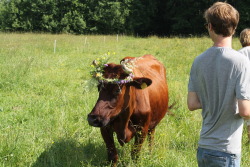
Inta Balodes Voyage into the Wilderness. PART II
The Wilderness believes
- In the power of the ARTS as an instigator for regional development
- That ART is indispensable for the quality of life in all communities.
So far in Latvia there have been two keðja Wilderness residencies – in Bebrene and in Ainaži. The texts that follows this one, PART III, PART IVa and PART IVb, speaks about my discoveries when following the residencies and summarizes some outcomes.
My search started out from my own images of the ideal Wilderness and from the articulated Wilderness beliefs. But I also had a somewhat skeptical and suspicious position:
I was thinking about the latest trends, thinking about using and utilizing the nature and the countryside, about artists dancing and painting and filming the beautiful untouched nature in order to later edit it into something that they could tour, performing it at rich urban festivals. I was thinking about the artists enjoying the peace and tranquil tempo which for the local community might also be emptiness and sadness and consequences of unemployment and wrong agriculture policies. It might be calm because all the young people had left.
I asked myself, -will the visiting artists take the positive things and then leave and the local people stay behind without really getting any clear idea of what happened and why? Will contemporary dance, being a primarily urban activity, bring urban fragmentation and oxygenlack into the community, and in a way state that this is the future of the arts and as a result make the local people stay with the “old arts”?
I hope that my stories will prove my nightmares about the parasitic nature of contemporary art wrong and rather confirm the content of the Wilderness beliefs.
To give my quest an artistic twist I used two different strategies. In the case of Bebrene I trusted the eyes and ears of others and in Ainaži I trusted myself and the beautiful image of the link between the two experiences.
Read the other parts of Inta Balodes Voyage into the Wilderness.
PART I. How I imagine Wilderness
PART III. Portrait of a Wilderness host
PART IV a. What people say about Bebrene/Dviete Wilderness dance
PART IV b. What did I see and feel in Ainaži?
PART V. Conclusions based on my Bebrene and Ainaži experiences
Inta Balode is a writer and editor of the Latvian on-line dance journal www.journal.dance.lv Inta and Dance LV Journal are keðja Writing Movement collaborators.
THE MOB, Kokko, day 10
we are actually working aswell. It’s just hard to take pictures and dance at the same time.
The Mob, kokko, day 6
Fast forward for a new spirit.
Day 6 was a busy day at Kokko. 9 am national tv arrived. 12 the local arts council arrived. 14:30 meeting in Hankasnieme with local arts council. And in between; lunch,cloth shopping at the second hand shop and costume shopping in an other shop (secret one). Day ended with sauna, like so many other days here.
We showed did a small improvisation for the tv team and for the local arts council. It was great to try out the freshest idea in a two minute format twice on one day. To quote on of the tv-guys reactions on what he saw: “that was strange”. =)
